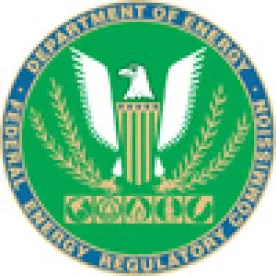FERC's order refuses to adopt cost-of-service rates for generation with secure on-site fuel supply in organized markets, but leaves open the possibility of future FERC action to address system "resiliency" concerns identified by Secretary of Energy Rick Perry.
The Federal Energy Regulatory Commission (FERC or the Commission) rejected the US Department of Energy’s (DOE’s) proposed changes to organized market rules that would have permitted certain baseload resources with at least 90 days of on-site fuel to be paid a cost-of-service rate instead of relying on compensation under market-determined prices.[1] Although FERC requested further comment and input on the importance of “resiliency” in organized markets, the January 8, 2018 order makes it unlikely that FERC will act on this issue in the near term.
DOE’s September 29, 2017 proposal focused on ensuring the “resilience” of energy service in organized energy markets, and was widely viewed as benefitting coal and nuclear generation, which have been retiring at an accelerating pace. US Secretary of Energy Rick Perry explained at the time that “the resiliency of the electric grid is threatened by the premature retirements of these fuel-secure traditional baseload resources.”
FERC Terminates DOE’s Proposed Resiliency Pricing Rule
In its January 8 order, FERC concluded that it lacked the record necessary to take the requested action to order changes to existing market rules under Section 206 of the Federal Power Act. Under that statute, FERC must first find that the existing rates are unjust and unreasonable and then find that the replacement rate would be just and reasonable.
FERC’s order alluded to the fact that the DOE proposal would be inconsistent with FERC’s adoption of the “competitive” and “pro-market” regulatory model that it has promoted since the 1970s in regions with organized markets. According to the Commission, FERC relies on competition in approving market rules and procedures that, in turn, determine the prices for energy, ancillary services, and capacity products. Under this market-driven system, “owners of generating facilities that are unable to remain economic in the market may take steps to retire or mothball their facilities.” FERC’s deference to existing market structures formed the basis of its determination that DOE’s proposal failed to satisfy both prongs of the Federal Power Act Section 206 analysis.
First, FERC explained that although some commenters alleged that potential retirements of these traditional baseload units caused grid resilience and/or reliability issues, the assertions alone were not enough to prove that existing regional transmission organization (RTO) and independent system operator (ISO) tariffs were unjust or unreasonable. Additionally, FERC claimed that none of the comments submitted by the RTOs/ISOs indicated any threat to resilience posed by past or future generator retirements. FERC also disagreed that an adequate record existed through the Commission’s ongoing investigation of price formation in organized markets to support the proposed rule’s action regarding bulk power system resilience.
In addressing the second prong, FERC explained that allowing any resource that met DOE’s resiliency criteria to receive a cost-of-service rate would not be just and reasonable because that payment would not be tied to the need for the facility or the cost to the system of providing that payment. However, FERC noted that if an RTO/ISO were to identify a specific threat to the resilience of its system, the Commission would promptly consider an appropriate proposal from the RTO/ISO to address the issue.
FERC Requests New Comments on Grid Resilience
Despite closing the docket created in response to the DOE proposal, FERC concluded that the voluminous record in the proceeding did suggest that it should continue to investigate the issue of “resilience,” whether there are threats to “resilience,” how those threats are currently addressed, and what FERC should do regarding those concerns.
As envisioned by FERC, “resilience” is “the ability to withstand and reduce the magnitude and/or duration of disruptive events, which includes the capability to anticipate, absorb, adapt to, and/or rapidly recover from such an event.” As such, FERC described this as more than the on-site fuel security covered by the DOE proposal, instead noting that the term encompasses “a broader consideration of resilience issues, including wholesale electric market rates, planning and coordination, and NERC standards” as well as “emergency action plan development, inventory management, and routine system maintenance.”
To continue its examination of the issue, FERC has directed each RTO and ISO to comment on its understanding of “resilience” by responding to a list of more than 20 questions associated with two distinct topics intended to examine how each region evaluates the resilience of its own system and how it addresses or mitigates any resiliency concerns. FERC’s first set of questions concerns how RTOs/ISOs assess threats to resilience and seeks comments on topics such as primary risks to resilience from both naturally occurring and manmade threats, plans to address unlikely but high-impact events (such as extreme weather), and the current existing attributes of the bulk power system that protect resilience. FERC’s second set of questions seeks comments on RTO/ISO efforts to mitigate identified threats to resilience and includes topics such as existing operational procedures to address specific resiliency threats as well as proposals for market constructs, operating procedures, NERC reliability standards, or planning processes that may be needed to ensure system resilience.
Initial responses from RTOs/ISOs are due in 60 days (by March 9, 2018), with reply comments from interested parties due 30 days thereafter.
FERC did not commit to acting on the responses, but explained that it would review the responses and “promptly decide whether additional Commission action on this issue is warranted.”
DOE Response and Next Steps
In a response issued shortly after FERC’s decision, Secretary Perry stated that, “as intended” the DOE’s proposed rule initiated a national debate on the resiliency of the United States’ electric system. He further explained that “[w]hat is not debatable is that a diverse fuel supply, especially with onsite fuel capability, plays an essential role in providing Americans with reliable, resilient and affordable electricity, particularly in times of weather-related stress like we are seeing now.”
Although Secretary Perry’s statement did not indicate what—if any—action DOE could take in response to FERC’s action, it remains possible that DOE will look for other avenues to push this issue, which appears to remain a priority for Secretary Perry.
Concurring Commissioner Statements
Although none of the five FERC commissioners dissented, three filed concurrences that outlined the fissures between the views of the commissioners that resulted in FERC’s mixed decision on how to address “resilience” concerns.
Commissioner Neil Chatterjee, a Republican former aide to Senate Majority Leader Mitch McConnell, explained that his concurrence hinged on his expectation that FERC’s decision would be “only the first step in a more systematic effort” to ensure the resilience of the US bulk power system. However, Commissioner Chatterjee stated that the record developed in response to DOE’s proposal indicated that interim measures may be needed to avoid near-term bulk power system challenges that could result from rapid changes to the mix generation resources. He also explained that RTOs/ISOs should have the discretion to determine the method for implementing any interim measures. To that end, Commissioner Chatterjee believed that FERC should have issued an order to show cause under Section 206 of the Federal Power Act to direct each RTO/ISO to either (1) submit tariff revisions to compensate generators that provide resilience attributes to the system and may otherwise be at risk of retirement before FERC concludes its new review or (2) show cause as to why such actions should not be mandated.
Commissioners Richard Glick and Cheryl LaFleur, both Democratic appointees, supported further consideration of resilience issues on the bulk power system while terminating the proceeding initiated by DOE’s proposal. Their concurrences indicated that the concept of resilience is already encompassed by FERC’s ongoing efforts to shore up grid reliability, making DOE’s particular proposed rule unnecessary. They also asserted that even if a resilience issue had been demonstrated, permitting certain baseload resources to be compensated through out-of-market payments would not have been an appropriate remedy. Commissioner LaFleur recommended that FERC “continue to focus its efforts not on slowing the transition from the past but on easing the transition to the future” as the market drives significant changes to the existing generation mix.
[1] Grid Resilience in Regional Transmission Organizations and Independent System Operators, Order Terminating Rulemaking Proceeding, Initiating New Proceeding, and Establishing Additional Procedures, 162 FERC ¶ 61,012 (2018).




 />i
/>i


